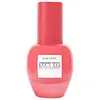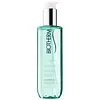What's inside
What's inside
 Key Ingredients
Key Ingredients

 Benefits
Benefits

 Concerns
Concerns

 Ingredients Side-by-side
Ingredients Side-by-side

Water
Skin ConditioningMethylpropanediol
SolventC9-12 Alkane
SolventFragaria Vesca Fruit Extract
AstringentHydroxypropyl Starch Phosphate
Salicylic Acid
MaskingPentylene Glycol
Skin ConditioningMandelic Acid
AntimicrobialSuccinic Acid
BufferingFragaria Vesca Leaf Extract
AstringentAzelaic Acid
BufferingAllantoin
Skin ConditioningSodium Hyaluronate
HumectantBisabolol
MaskingOpuntia Ficus-Indica Flower Extract
Skin ConditioningNiacinamide
SmoothingGlucosamine
Zingiber Officinale Root Extract
MaskingSaccharomyces Ferment
Skin ConditioningDextrin
AbsorbentPolydextrose
Humectant1,2-Hexanediol
Skin ConditioningCaprylyl Glycol
EmollientCoco-Caprylate/Caprate
EmollientHydroxyacetophenone
AntioxidantAmylopectin
Butylene Glycol
HumectantSuccinoglycan
Skin ConditioningLeuconostoc/Radish Root Ferment Filtrate
AntimicrobialLauroyl Lysine
Skin ConditioningSodium Phytate
Lecithin
EmollientAminomethyl Propanol
BufferingXanthan Gum
EmulsifyingCitric Acid
BufferingParfum
MaskingWater, Methylpropanediol, C9-12 Alkane, Fragaria Vesca Fruit Extract, Hydroxypropyl Starch Phosphate, Salicylic Acid, Pentylene Glycol, Mandelic Acid, Succinic Acid, Fragaria Vesca Leaf Extract, Azelaic Acid, Allantoin, Sodium Hyaluronate, Bisabolol, Opuntia Ficus-Indica Flower Extract, Niacinamide, Glucosamine, Zingiber Officinale Root Extract, Saccharomyces Ferment, Dextrin, Polydextrose, 1,2-Hexanediol, Caprylyl Glycol, Coco-Caprylate/Caprate, Hydroxyacetophenone, Amylopectin, Butylene Glycol, Succinoglycan, Leuconostoc/Radish Root Ferment Filtrate, Lauroyl Lysine, Sodium Phytate, Lecithin, Aminomethyl Propanol, Xanthan Gum, Citric Acid, Parfum
Water
Skin ConditioningButylene Glycol
HumectantAlcohol Denat.
AntimicrobialGlycerin
HumectantPhenoxyethanol
PreservativeSodium Citrate
BufferingChlorphenesin
AntimicrobialPPG-6-Decyltetradeceth-30
EmulsifyingPEG/PPG/Polybutylene Glycol-8/5/3 Glycerin
HumectantMannose
HumectantDisodium EDTA
Citric Acid
BufferingSerine
MaskingCitrulline
Skin ConditioningZinc Gluconate
Skin ConditioningLinalool
PerfumingBenzyl Salicylate
PerfumingLactobacillus Ferment
Skin ConditioningAlpha-Isomethyl Ionone
PerfumingBenzyl Alcohol
PerfumingCitronellol
PerfumingGeraniol
PerfumingButylphenyl Methylpropional
PerfumingHydrolyzed Wheat Protein
Skin ConditioningHydroxycitronellal
PerfumingGlycine
BufferingArginine
MaskingVitreoscilla Ferment
Skin ConditioningSodium Dehydroacetate
PreservativeSodium Succinate
BufferingMethionine
Skin ConditioningPotassium Sorbate
PreservativeTocopherol
AntioxidantParfum
MaskingWater, Butylene Glycol, Alcohol Denat., Glycerin, Phenoxyethanol, Sodium Citrate, Chlorphenesin, PPG-6-Decyltetradeceth-30, PEG/PPG/Polybutylene Glycol-8/5/3 Glycerin, Mannose, Disodium EDTA, Citric Acid, Serine, Citrulline, Zinc Gluconate, Linalool, Benzyl Salicylate, Lactobacillus Ferment, Alpha-Isomethyl Ionone, Benzyl Alcohol, Citronellol, Geraniol, Butylphenyl Methylpropional, Hydrolyzed Wheat Protein, Hydroxycitronellal, Glycine, Arginine, Vitreoscilla Ferment, Sodium Dehydroacetate, Sodium Succinate, Methionine, Potassium Sorbate, Tocopherol, Parfum
 Reviews
Reviews

Ingredients Explained
These ingredients are found in both products.
Ingredients higher up in an ingredient list are typically present in a larger amount.
Butylene Glycol (or BG) is used within cosmetic products for a few different reasons:
Overall, Butylene Glycol is a safe and well-rounded ingredient that works well with other ingredients.
Though this ingredient works well with most skin types, some people with sensitive skin may experience a reaction such as allergic rashes, closed comedones, or itchiness.
Learn more about Butylene GlycolCitric Acid is an alpha hydroxy acid (AHA) naturally found in citrus fruits like oranges, lemons, and limes.
Like other AHAs, citric acid can exfoliate skin by breaking down the bonds that hold dead skin cells together. This helps reveal smoother and brighter skin underneath.
However, this exfoliating effect only happens at high concentrations (20%) which can be hard to find in cosmetic products.
Due to this, citric acid is usually included in small amounts as a pH adjuster. This helps keep products slightly more acidic and compatible with skin's natural pH.
In skincare formulas, citric acid can:
While it can provide some skin benefits, research shows lactic acid and glycolic acid are generally more effective and less irritating exfoliants.
Most citric acid used in skincare today is made by fermenting sugars (usually from molasses). This synthetic version is identical to the natural citrus form but easier to stabilize and use in formulations.
Read more about some other popular AHA's here:
Learn more about Citric AcidParfum is a catch-all term for an ingredient or more that is used to give a scent to products.
Also called "fragrance", this ingredient can be a blend of hundreds of chemicals or plant oils. This means every product with "fragrance" or "parfum" in the ingredients list is a different mixture.
For instance, Habanolide is a proprietary trade name for a specific aroma chemical. When used as a fragrance ingredient in cosmetics, most aroma chemicals fall under the broad labeling category of “FRAGRANCE” or “PARFUM” according to EU and US regulations.
The term 'parfum' or 'fragrance' is not regulated in many countries. In many cases, it is up to the brand to define this term.
For instance, many brands choose to label themselves as "fragrance-free" because they are not using synthetic fragrances. However, their products may still contain ingredients such as essential oils that are considered a fragrance by INCI standards.
One example is Calendula flower extract. Calendula is an essential oil that still imparts a scent or 'fragrance'.
Depending on the blend, the ingredients in the mixture can cause allergies and sensitivities on the skin. Some ingredients that are known EU allergens include linalool and citronellol.
Parfum can also be used to mask or cover an unpleasant scent.
The bottom line is: not all fragrances/parfum/ingredients are created equally. If you are worried about fragrances, we recommend taking a closer look at an ingredient. And of course, we always recommend speaking with a professional.
Learn more about ParfumWater. It's the most common cosmetic ingredient of all. You'll usually see it at the top of ingredient lists, meaning that it makes up the largest part of the product.
So why is it so popular? Water most often acts as a solvent - this means that it helps dissolve other ingredients into the formulation.
You'll also recognize water as that liquid we all need to stay alive. If you see this, drink a glass of water. Stay hydrated!
Learn more about Water